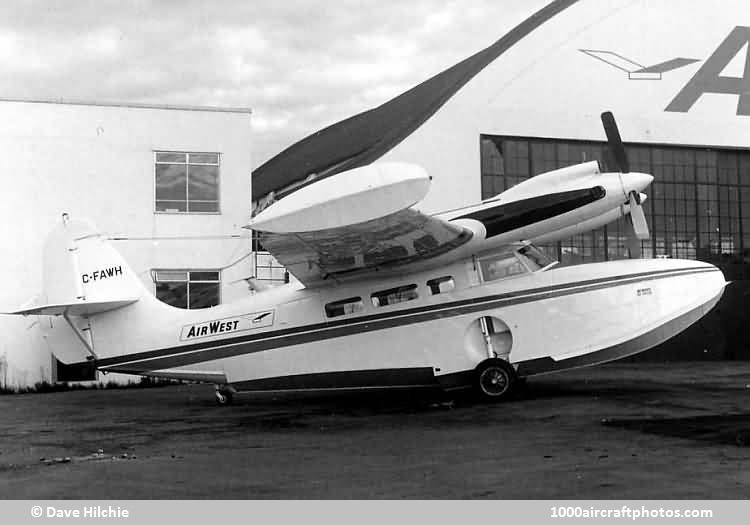It was registered as CF-BZY to Canada Veneers Ltd. of Saint John, New Brunswick on October 29, 1945, then exported to the USA in May, 1951 as registered first as N36992, later N3692, and later exported to Britain where it was registered as G-ASXG to the Grosvenor Estates on October 8, 1964. By that time the underwing floats had been replaced by retractable wing tip floats.
On July 26, 1968 it was converted to a turboprop aircraft by Marshall of Cambridge, UK. Two 550 shp Pratt &Whitney Aircraft of Canada PT6A-20 turboprop engines replaced the original 450 hp Pratt & Whitney R-985 Wasp Junior nine-cylinder, air-cooled radial engines, while also a radar-nose and wrap-around wind screens were fitted.
The original G-21 and G-21A types were produced and certified under TC 654. Any alteration to the aircraft's certified layout needs an STC, for TC 654 there are 64 STCs, including one to install the two 550 shp PT6A-20 engines. An aircraft altered under an STC does not have to be re-certified and therefore does not legally receive a different designation.
Initiated by Angus McKinnon, the company and the FAA referred to the STC-covered conversions as a Grumman G-21A Hybrid or Grumman G-21A Turboprop, while the media used McKinnon G-21 Turbo-Goose as a designation. After the conversion, for which a McKinnon-supplied STC-covered kit was used, G-ASXG was technically still a Grumman G-21A, covered by the original TC 654, as confirmed by a representative of the current owner of the McKinnon type certificate.
It was re-imported into Canada in 1973 as C-FAWH and Dave Hilchie adds:
